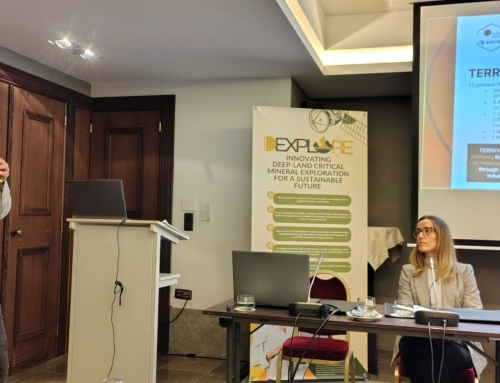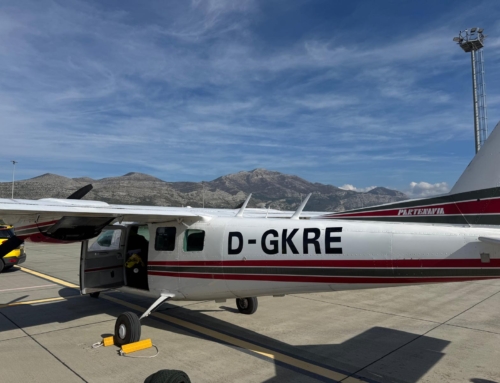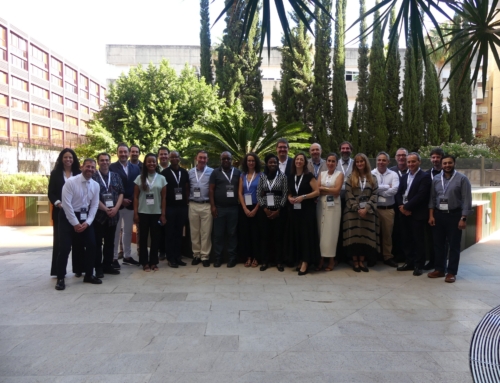The technological revolution demands minerals such as rare earths, considered critical due to their scarcity and strategic value. The European Terravision project, in which the ITA participates, combines artificial intelligence and Earth observation technologies for application in the mining sector, both in the search for new deposits and to improve sustainability.
Humans see only in the visible spectrum of light, but satellites are capable of seeing much more. Their instruments also perceive other spectral ranges, which, from high in orbit, allow them to identify both deposits of certain raw materials and levels of pollution in the vicinity of a mining operation.
The European Terravision project is developing an Earth Observation Mining Services Platform with the goal of improving the entire value chain of critical raw materials and contributing to more sustainable mining practices.
The Technological Institute of Aragon (ITA) is part of the multidisciplinary consortium , with organizations from six countries – Greece, Norway, Spain, Italy, Belgium and Germany – that, since January 2024, has been working on this project, funded by the European Commission’s Horizon Europe program.
The part corresponding to the Zaragoza team , made up of Rafael del Hoyo, Sergio Gracia Borobia and Álvaro Navarro Álvarez, technicians from the Artificial Intelligence, Cognitive Systems and Big Data group at ITA, focuses, on the one hand, on the discovery of new raw materials and the use of secondary resources and, on the other, on the monitoring of the ecological footprint, since the movement of dust and the expansion of mining operations generate a significant environmental impact.
“We are focused on identifying new raw materials that allow us to maximize extraction efficiency,” notes Del Hoyo. “Although most current quarries have a primary mining material, there are secondary raw materials that are often not adequately utilized,” he asserts. For example, in some Spanish mines, “discarded materials have been found to contain rare earths, which could be used to increase mining efficiency.”
A spectral library of raw materials
Using information obtained through sensors and satellite imagery, the goal is to identify indications of reserves of these raw materials so they can be exploited. This data will be integrated into an open and standardized spectral library of raw materials that will support the entire mining lifecycle of essential raw materials and the mapping of primary and secondary essential raw materials.
This tool is being designed for use by geologists, engineers, and other mining and environmental professionals , providing valuable data for decision-making regarding resource exploitation and sustainability.
“The spectral library we are developing contains hyperspectral information, which means,” explains Del Hoyo, “that not only the visible spectrum is analyzed , but also other spectral ranges that allow us to identify both new raw materials and levels of environmental pollution.”
Lithium, cobalt, nickel, manganese… Each material has a characteristic spectral range , which allows its composition to be identified through hyperspectral imaging. For example, Del Hoyo points out, ferrous minerals exhibit high reflection in the near-infrared range, while rare earths typically display distinctive patterns in the visible and mid-infrared spectrum.
But environmental pollution can also be “seen” ; in this case, “reflection and absorption patterns vary depending on the composition of suspended particles, which can distort the analysis.”
Artificial intelligence plays a crucial role in identifying secondary materials that are not visible to the naked eye, “as it allows subtle variations in spectral patterns to be detected.”
Following the ecological footprint
To track and analyze the ecological footprint of mining operations, data captured by sensors and satellites is integrated to assess and mitigate the environmental effects of mining activities.
The Terravision project partners are working together to define a set of indicators that will accurately quantify the environmental and socioeconomic impact of mining activities.
These indicators “are calculated by integrating data from satellite and aerial images and sensors deployed in the field, using artificial intelligence techniques to map the temporal evolution of environmental impact and its correlation with mining activity.”
Currently, “we are working with satellite images captured by the Sentinel and Prisma missions.” They are also using images obtained by drones and data from sensors located in the mines themselves “to obtain a comprehensive and detailed view.”
In the first year of a project that will run until 2028, the ITA is currently working on developing image analysis and data processing technology using artificial intelligence. “So far,” Del Hoyo states, “we have made significant progress in the processing of hyperspectral images and in the integration of data from satellites and sensors.”
In the next phases, they will continue to optimize artificial intelligence algorithms and develop predictive models to identify new raw materials and more accurately assess environmental impact.
AI to convert raw data into analysis-ready data
The large-scale Earth Observation Data Ecosystem for Mining Services will link and exploit diverse data from key sources to monitor the entire lifecycle of raw materials. Through the Terravision project, raw multi-sensory Earth observation data will be transformed into analysis-ready data and semantically combined with in-situ data to enable the development of a spectral library of raw materials.
Terravision is coordinated by the Institute of Communication and Computer Systems (ICCS) in Athens. The project handles different types of data from a variety of sources. The starting point is raw Earth observation data , which includes images captured by satellites such as the European Space Agency’s Sentinel and the Italian Space Agency’s Prisma, as well as images taken by drones.
These images “are used to identify geological patterns, vegetation, and surface variations . After initial processing, the images are calibrated and corrected to remove distortions, resulting in accurate maps that reflect the terrain’s characteristics,” explains Rafael del Hoyo, head of the Artificial Intelligence, Cognitive Systems, and Big Data research line at ITA.
In addition , in-situ data is used, information obtained directly from the mines through sensors deployed in the environment, which allow for continuous monitoring of environmental and geological parameters. The mines involved in the Terravision project are Terna Mag, in Greece; Tharsis, in Huelva; and Canteras, in Granada.
The integration of this data is achieved by applying advanced artificial intelligence techniques that correlate information from multiple sources, providing a comprehensive and accurate analysis.
Read the original article in Spanish, as was published on heraldo.es





